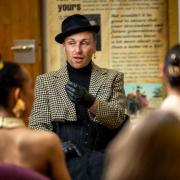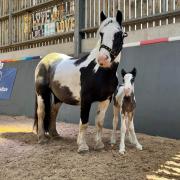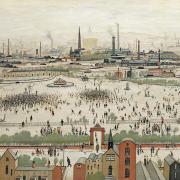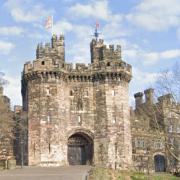For 300 years the Kings Own Royal Regiment and its forebears have been sending Lancashire’s finest around the globe to look after British interests.
Their soldiers have been involved in conflicts that fill the history books: from Ireland to India, from Scotland to South Africa, and from Waterloo to Australia.
For almost a century, since 1929, that history has been marked by a gallery in Lancaster City Museum. Now, those who look after and display the regiment’s illustrious history are preparing for a new era.
They are looking for additional trustees, including a chairperson, aiming to raise around half a million pounds to modernize and improve the museum’s displays and, crucially, deciding how to carefully walk the tightrope of decolonialization.

They have already secured £60,000 from the Esmee Fairbairn Foundation and Museum Association to employ a specialist historian to tackle this last challenge.
In post-colonial times, museums throughout the western world are considering how to address the possession of artefacts once thought of as the legitimate spoils of war.
The KORR museum covers the period from 1680s when the regiment backed William of Orange in his takeover from James II and played a crucial role in the Battle of the Boyne, to 1959 when it was amalgamated into the Kings Own Royal Border Regiment.
It has always recruited from Lancashire but after reforms of the 1880s the army’s regiments became associated with the counties. KORR focused on Lancashire north of a line from Garstang to Fleetwood and including the Furness peninsula and Coniston areas of the county North of the Sands. These loyalties were strengthened with the recruitment of ten battalions during World War One.

The current chairman of the trustees of the collection is Robin Ashcroft, now aged 67, who was born in Liverpool and educated in Preston, before being commissioned from Sandhurst in 1978. He joined KORBR as second lieutenant and rose to Captain, before injury forced him to retire from the army in 1985. He then worked in the City and for the Financial Times.
In 1999 he returned north, running the National Mountaineering Exhibition, then at Rheged near Penrith and now at Keswick. Subsequently he was director of Kendal Mountain Film Festival, and was elected to serve on South Lakeland District Council.
In 2017 he was asked to become a trustee of the KORR collection, and asked to take on the chair. His six-year term is coming to an end, as stipulated under the rules of the Charity Commission. His replacement needs to be in place by April 1, 2024.
‘It has had its challenges, but overall has been a lot of fun,’ he says. ‘The new person needs to be someone with an interest in Lancaster’s heritage and the regiment’s history, not necessarily with a military background, but someone who appreciates what we can do for the wider community. They will also need experience of financial management and be able to act as an ambassador, representing the museum and the trust.

‘Trustees need a range of skills. We have recently recruited an architect and a heritage marketing expert and have strong links with the university. We also need to raise around £500,000 to revamp the exhibition which needs updating and refreshing, using more modern thinking and including digital elements.
‘We won’t be doing it in isolation. We will be working with Lancaster City Council with a holistic approach to the building,’ he says.
As an example, he cites moving emphasis from uniforms and the exploits of the officers to more celebration of the soldiers and the families they left behind, and their communities.
Then there is decolonialization. One sensitive exhibit of a Coptic bible, bracelets and jewelry from a hostage rescue mission to Abbysinia in the mid-19th century has already been removed from display. Some of the artefacts may be returned to the modern country of Ethiopia for display in its museums. Some may stay.
‘We are not going to be rushed into making a decision,’ Robin adds. ‘We will look carefully at what we have and the best way of handling it. We will have conversations with the appropriate bodies, engage with the Ethiopian diaspora in the UK and the wishes of those who made donations to the museum.’

It is not just Ethiopians who may have reservations about exhibits. Images of Culloden Moor may give pause for the Scots. The Battle of the Boyne certainly does for the Irish.
‘It is a complex issue. At one time the spoils of war were considered to be quite legitimate,’ Robin says. ‘We are not kicking it into the long grass, and the grant from Esmee Fairbairn enables us to engage a professional historian to specialize in the engagements with the communities necessary. It could take two or three years.
‘At the end of it we will have a museum that tells the story of ordinary people doing extraordinary things.’
The Regimental Museum is in the City Museum in Lancaster’s Market Square. It is open Tuesday to Sunday (and bank holiday Mondays) from 10am to 5pm and admission is free. The museum is closed between Christmas and New Year. Call 01524 64637 for more details.
To find out more about the museum and the chairman role, email robin.ashcroft7@icloud.com

HONORABLE HISTORY
The Regiment was raised in July 1680, soon after the creation of the new Regular Army. It was formed specifically to help defend Tangier in North Africa.
The Regiment, under Colonel Charles Trelawny, was the first to transfer allegiance to the Protestant Prince William of Orange when he landed at Torbay on November 5, 1688. It is a Regimental tradition that the new King William III granted the Regiment its badge, the Lion of England, for being one of the first to go over to him.
In 1703 the regiment took part in the capture of Gibraltar.
In 1715 the Regiment received the distinctive title The King’s Own Regiment of Foot. It was involved in the actions against the Jacobite rising under ‘Bonnie Prince Charlie’ in 1745-46, and fought in the Battle of Culloden.
In 1815 its soldiers were involved in the Battle of Waterloo and the campaign which saw the overthrow of Napoleon.
In 1831 the King’s Own were sent to Australia to guard transported prisoners, providing garrisons for settlements in New South Wales and Tasmania.
The King’s Own fought throughout the Crimean War and suffered heavy losses through disease and injury.
Lancaster became the permanent home of the King’s Own as a result of the army reforms of Edward Cardwell, the Secretary of State for War from 1868.
During The Boer War 1899-1902 men from the King’s Own regular, volunteer and militia battalions fought during the three years of war in South Africa.
At the outbreak of World War One, the King’s Own was made up of two Regular and two Territorial Battalions as well as a Special Reserve Battalion. By the end of the war it had expanded to 17 battalions, ten of which had seen active service. During the war, more than 44,000 men served with the Regiment, of whom nearly 7,000 died.
Battalions of the King’s Own saw service all over the world during the Second World War. All were involved in the actions in May 1940 and were successfully evacuated through Dunkirk



























